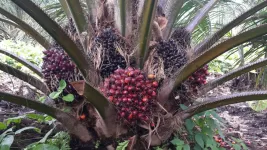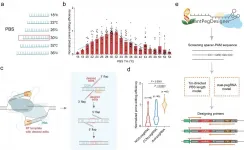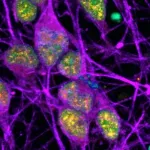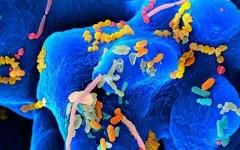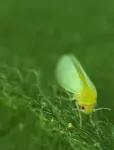(Press-News.org) Lincoln, Neb., March 25, 2021 -- Palm oil, the most important source of vegetable oil in the world, is derived from the fruit of perennial palm trees, which are farmed year-round in mostly tropical areas. The palm fruit is harvested manually every 10 days to two weeks, then transported to a mill for processing, and ultimately exported and made into a dizzying array of products from food to toiletries to biodiesel.
"You probably ate palm oil for breakfast," said Patricio Grassini, an associate professor of agronomy at the University of Nebraska-Lincoln. "There is probably palm oil in your shampoo and for sure palm oil in your makeup."
Dozens of countries produce palm oil, but Indonesia produces approximately two-thirds of the world's supply, and demand for the product is ever-growing.
This is a double-edged sword for Indonesia and other palm-oil producing countries, Grassini said. Palm oil is a major export and contributes to the economic stability of countries that are major producers, as well as to the individual farmers who produce it. But to keep up with demand, rainforests and peatlands - valuable ecosystems that contribute greatly to biodiversity -- are often converted to palm production.
A four-year research project led by Grassini and supported by a $4 million grant from the Norwegian Ministry of Foreign Affairs suggests that keeping up with demand may not necessarily mean converting more valuable, fragile ecosystems into agricultural land.
According to research published March 25 in Nature Sustainability, palm oil yields on existing farms and plantations could be greatly increased with improved management practices. Researchers from the Indonesian Oil Palm Research Institute, the Indonesian Agency for Agriculture Research and Development, and Wageningen University in the Netherlands were also part of this project.
In Indonesia, about 42% of land used for palm oil production is owned by small holder farmers, with the rest managed by large plantations, said Juan Pablo Monzon, a UNL research assistant professor of agronomy and horticulture and first author of the published paper. "There is great potential to increase productivity of current plantations, especially in the case of smallholders' farms, where current yield is only half of what is attainable."
The research shows that palm farmers have significant opportunity to increase their production, said Grassini, one of the developers of the Global Yield Gap Atlas, a collaboration between UNL and Wageningen University in the Netherlands designed to estimate the difference between actual and potential yields for major food crops worldwide including palm oil.
"The potential impact is huge, and if we are able to realize some of that potential, that means a lot in terms of reconciling economic and environmental goals," Grassini said. "If we can produce more, we don't need to expand into new areas. But this would require the effective implementation of current Indonesia government policy and assuring that regulations are enforced so that intensification and productivity gains translate into sparing critical natural ecosystems."
The gap between the current and attainable yields could be bridged by implementing good agronomic practices, Monzon said. As a result, the country could produce 68% more palm oil on existing plantation area located in mineral soils.
Grassini and other researchers identified key management practices that could lead to larger yields. Those practices include improved harvest methods, better weed control, improved pruning and better plant nutrition. Grassini and other researchers now are working with producers, non-government organizations, Indonesian government officials and a host of other partners to put these management techniques into practice. Already they have begun to see improvements in yields.
This is exciting from both environmental and economic standpoints, Grassini said. It also stands to have a great impact on the millions of individual farmers who draw their livelihood from small palm farms often comprised of just a few acres.
"Whatever we do to help the farmers produce more palm oil on the land that they have directly impacts their income and directly impacts their families," Grassini said. "It could be the difference between sending kids to school or not."
The first phase of the research - the research that identified the yield gap - was surprising, Grassini said. Indonesia had already gone through a period of agricultural intensification that had resulted in better yields for rice and corn, and he hadn't anticipated quite so much room for improvement when it came to palm oil.
But it's the second phase of the research that really excites him. So many people from so many different backgrounds are all working together to fine-tune management strategies and put them into practice. After just 15 months, yields on test plots are already up, with potential for more growth in the future. Robust education and extension efforts will be key to fully exploit the potential for growth, Grassini said.
"I don't think you will find too many projects where people are working side-by-side on the production side, science side and environmental side," Grassini said. "All are bringing real solutions to the table and together can have a massive impact."
INFORMATION:
Precision genome editing enables the precise modification of DNA in living cells, thus enabling a breadth of opportunities for plant breeding. Prime editors, developed by Prof. David R. Liu and his colleagues, permit the installation of desired edits in a programmable target site. They are comprised of an engineered Cas9 nickase (H840A)-reverse transcriptase (RT) fusion protein and a prime editing guide RNA (pegRNA).
Prime editors were previously developed and optimized as an extremely versatile editing strategy for generating programmable point mutations, insertions and deletions in rice and wheat by Prof. GAO Caixia of the Institute of Genetics and Developmental Biology (IGDB) of the Chinese Academy of Sciences ...
Researchers at the National Institutes of Health (NIH) have discovered specific regions within the DNA of neurons that accumulate a certain type of damage (called single-strand breaks or SSBs). This accumulation of SSBs appears to be unique to neurons, and it challenges what is generally understood about the cause of DNA damage and its potential implications in neurodegenerative diseases.
Because neurons require considerable amounts of oxygen to function properly, they are exposed to high levels of free radicals--toxic compounds that can damage DNA within cells. ...
Fossil remains of the human pelvis are rare because the pelvic bones do not preserve very well. Therefore, it has remained unclear when human sex differences in the pelvis evolved: jointly with upright walking, or later, together with the large human brains. "We have discovered that the pattern of sex differences in the human pelvis is probably much older than previously thought", says evolutionary biologist Barbara Fischer.
A team of biologists from the University of Vienna, the KLI for Evolution and Cognition Research, and the University of Calgary compared pelvic sex differences in humans with those in chimpanzees, the most closely-related living species to modern ...
Power converters are the little-known systems that make electricity so magical. They are what allow us to plug in our computers, lamps and televisions and turn them on in a snap. Converters transform the alternating current (AC) that comes out of wall sockets into the exact level of direct current (DC) that our electronics need. But they also tend to lose, in average, up to 20% of their energy in the process.
Power converters work by using power transistors - tiny semiconductor components designed to switch on and off and withstand high voltages. Designing novel power transistors to improve the converters' efficiency is the aim of the team of EPFL engineers. With their entirely new transistor design, based on the counterintuitive application ...
University of Texas at Dallas researchers have discovered that a novel surface they developed to harvest water from the air encourages tiny water droplets to move spontaneously into larger droplets.
When researchers placed microdroplets of water on their liquid-lubricant surface, the microdroplets propelled themselves to climb, without external force, into larger droplets along an oily, ramp-shaped meniscus that forms from the lubricant around the larger droplets. The "coarsening droplet phenomenon" formed droplets large enough for harvesting.
"This meniscus-mediated climbing effect enabled rapid coalescence on hydrophilic ...
The evolving science of wisdom rests on the idea that wisdom's defined traits correspond to distinct regions of the brain, and that greater wisdom translates into greater happiness and life satisfaction while being less wise results in opposite, negative consequences.
Scientists have found in multiple studies that persons deemed to be wiser are less prone to feel lonely while those who are lonelier also tend to be less wise. In a new study, published in the March 25, 2021 issue of the journal Frontiers in Psychiatry, researchers at University of California San Diego School of Medicine take the connection between wisdom, loneliness ...
An analysis of adult human brain tissue reveals over 900 proteins tied to epilepsy. The brain disorder, estimated to afflict more than 3 million Americans, is mostly known for symptoms of hallucinations, dreamlike states, and uncontrolled, often disabling bodily seizures.
Led by researchers at NYU Grossman School of Medicine, the study examined molecular differences among the brains of 14 epilepsy patients and another group of 14 adults of similar age and gender who did not have the disease.
Study results showed that altered levels of brain proteins predominated in the hippocampus, a structure located deep inside ...
Researchers from Charité - Universitätsmedizin Berlin and the Francis Crick Institute have developed a mass spectrometry-based technique capable of measuring samples containing thousands of proteins within just a few minutes. It is faster and cheaper than a conventional blood count. To demonstrate the technique's potential, the researchers used blood plasma collected from COVID-19 patients. Using the new technology, they identified eleven previously unknown proteins which are markers of disease severity. The work has been published in Nature Biotechnology*.
Thousands of proteins are active inside the human body at any given time, providing its structure and enabling reactions which are essential to life. The body raises and lowers the activity ...
Expectant women are more likely to give birth early if they have high blood levels of a chemical used in flame retardants compared with those who have limited exposure, a new study finds.
These polybrominated diphenyl ethers (PBDEs) are used in the manufacture of furniture, carpeting, and other products to reduce flammability. Previous studies have found that the substances can leach into household dust and build up in the body where they may interfere with the thyroid, an organ that secretes brain-developing hormones. Childhood exposure to PBDEs has been linked to learning disabilities, autistic ...
Millions of years ago, aphid-like insects called whiteflies incorporated a portion of DNA from plants into their genome. A Chinese research team, publishing March 25th in the journal Cell, reveals that whiteflies use this stolen gene to degrade common toxins plants use to defend themselves against insects, allowing the whitefly to feed on the plants safely.
"This seems to be the first recorded example of the horizontal gene transfer of a functional gene from a plant into an insect," says co-author Ted Turlings (@FARCE_lab), a chemical ecologist and entomologist ...
